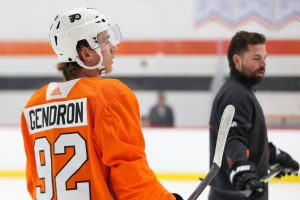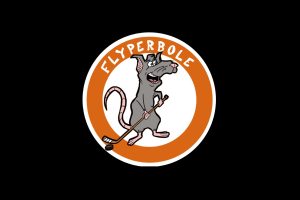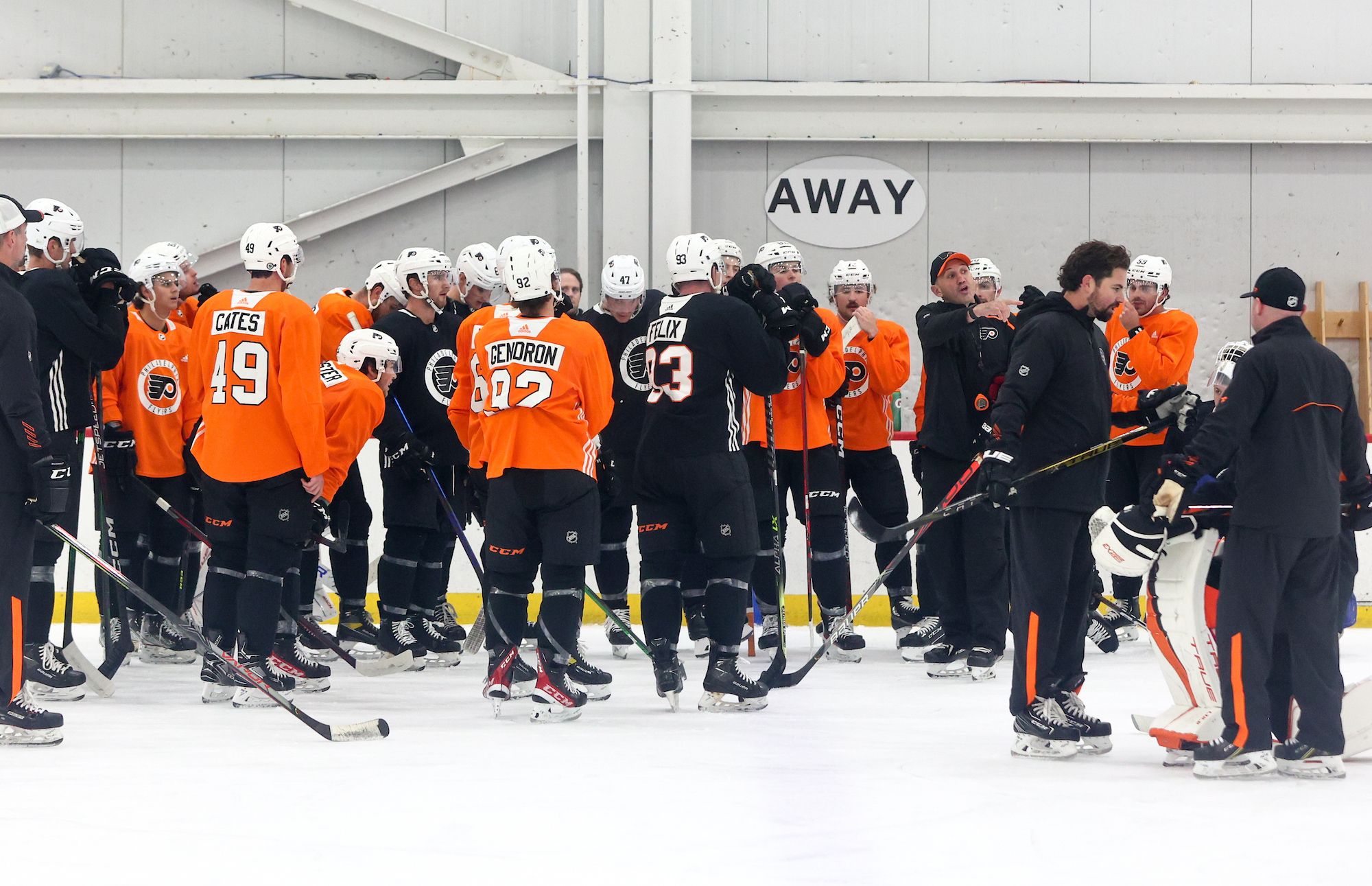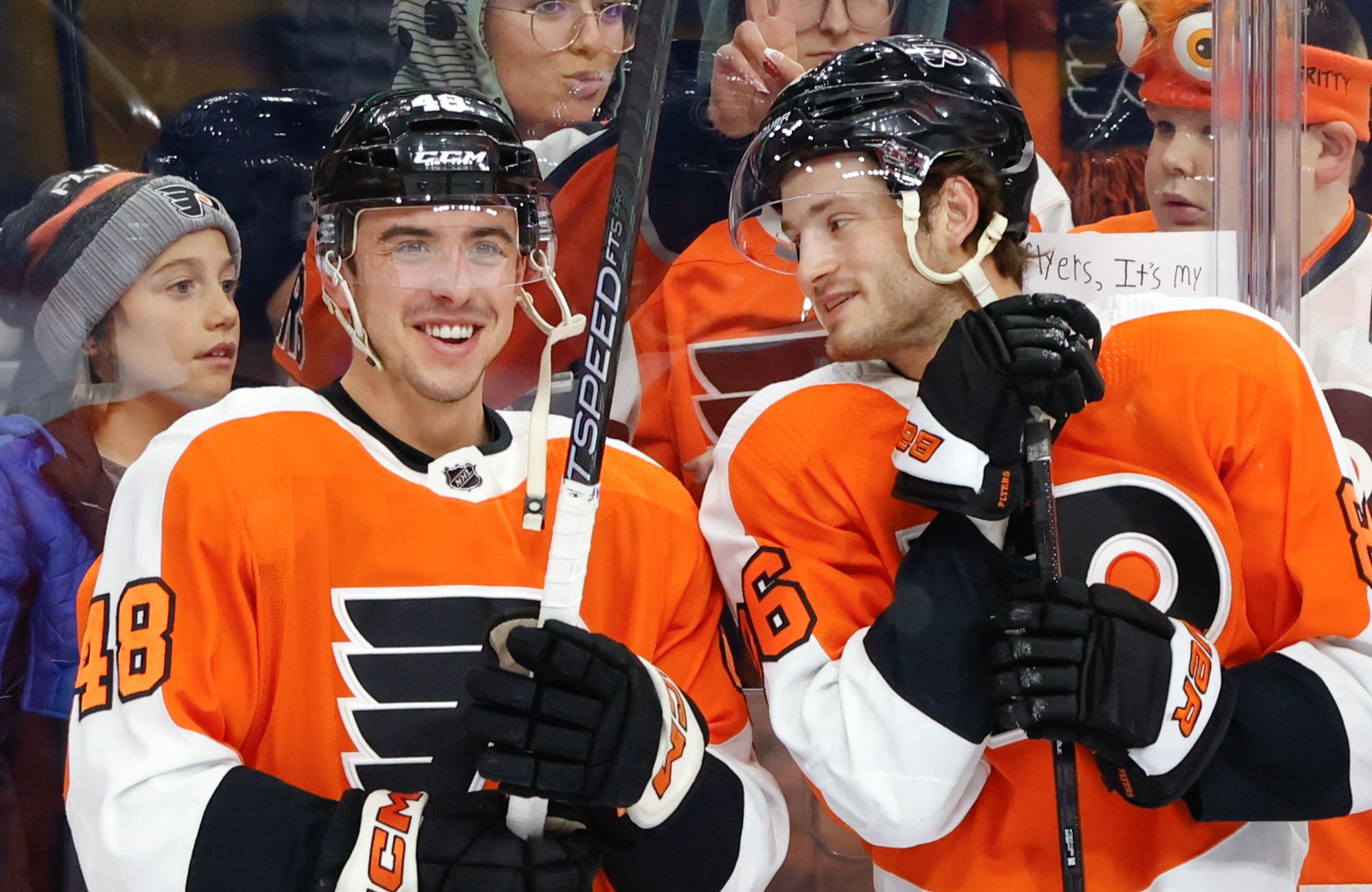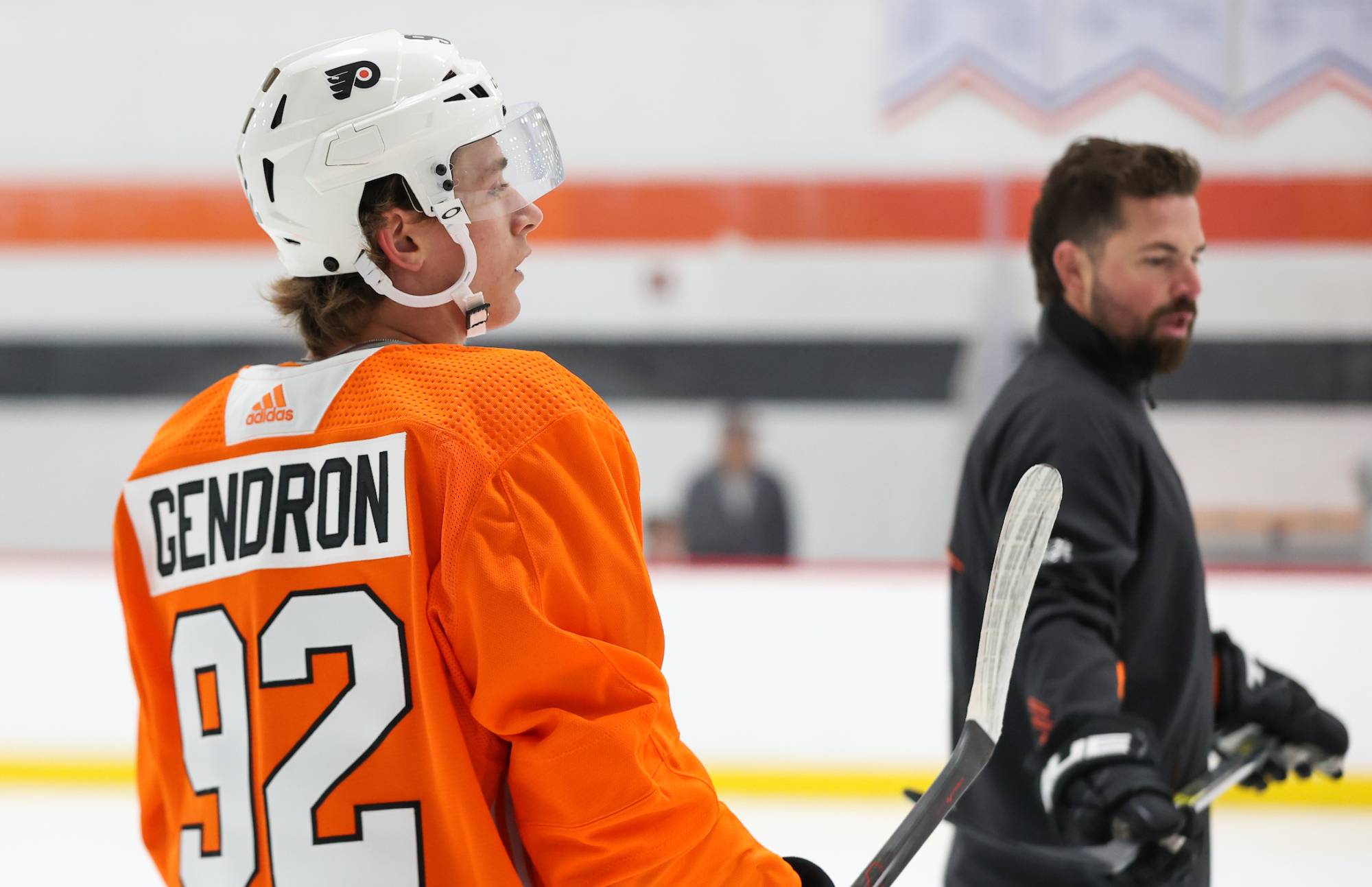Morning Observations is a feature where we break down the previous night’s game with an analytical eye.
#1: Flyers lost the goaltending and 5v5 battles
In the wake of a 5-2 loss to a division rival, it’s not going to be easy to pick out positives from the wreckage. At the same time, it remains important to understand exactly what went wrong, rather than simply falling back on a blanket “they played like garbage” evaluation, no matter how true it might feel in the moment. And by the metrics that take into account all situations, the Flyers actually didn’t post terrible results. They outshot the Rangers 32-28, won in total attempts 63-54, and even led in Expected Goals, 2.64-2.24. When looking at those metrics, it doesn’t seem like the game should have been such a shellacking.
For a majority of the game, however, the Flyers played poorly. A large portion of both their raw shot volume and their shot quality was racked up on a first period power play that saw Henrik Lundqvist simply stand on his head. But at even strength, Philadelphia was unimpressive, finishing with a 44.76% score-adjusted Corsi and a very poor 38.67% SA-Fenwick (removing blocked shots from the equation). The power play may have erased New York’s territorial edge, but the fact remains that most of the game is played at even strength, and that the Rangers outplayed the Flyers in that area.
Then, there’s the goaltending. Lundqvist was predictably stellar, as he usually is against the Flyers. Steve Mason, on the other hand, gave up one especially weak goal to Chris Kreider in the third period to make it 2-0 Rangers, but mostly just failed to be the hero on odd-man rushes. No goalie could have stopped Michael Grabner’s goal, so we’re really just talking about the two by Kevin Hayes as high-difficulty but stoppable shots that Mason allowed. They weren’t “bad” goals — two-on-ones are very difficult for goalies — but they weren’t impossible to prevent, either. On the Rangers’ side, Lundqvist did make a number of those types of stops, and Mason just couldn’t. Combined with the disparity in 5v5 play, that was enough to give the Rangers a comfortable victory and send the Flyers to yet another defeat.
#2: Neutral zone play the difference
So how exactly did a Rangers club missing Rick Nash, Mika Zibanejad and Pavel Buchnevich (essentially an entire top-six line) still drive play at 5v5 over the Flyers? It all started in the neutral zone, where New York was simply more sound than Philadelphia, both offensively and defensively. As it is usually the case when the team struggles in a specific area, it was a combination of poor execution on the part of the Flyers and the talent level and efforts of the opposition that caused the problems.
Philadelphia didn’t make it easy on themselves in the middle of the ice by simply struggling to make easy passes in the neutral zone. In addition, their routes were awful — all too often they would skate the puck into a high-traffic area rather than target open spots in the forecheck formation, which invariably required a high-difficulty pass to create enough space for even a successful dump-in. But the Rangers contributed as well. Their defense held tight gaps when facing oncoming Flyers, and the forwards backchecked like mad.
For the Flyers on defense, it was the opposite. Probably terrified of New York’s speed, the blueliners conceded space on zone entries and allowed the Rangers to set up cleanly. Back pressure from forwards was also nonexistent, forcing the defensemen to weigh the risk/reward of a direct challenge on almost every shift. Jakub Voracek even noted that he felt his team created chances offensively, and he wasn’t wrong. They just didn’t spend enough time in that zone due to poor play in the middle of the rink to take full advantage of that fact.
NHL.com Report & Highlights | Corsica.Hockey Game Recap Page | HockeyStats.ca Recap | NaturalStatTrick Recap | HockeyViz.com | BSH Recap | Meltzer’s Musings
#3: Just no push in the third period
The Flyers still had a legitimate chance to win this game entering the final period, as Dave Hakstol himself noted in his post-game press conference. Sure, they were down 1-0. But in that situation, we know by studying score effects that the trailing team tends to put heavy pressure on the opposition and dominate the territorial battle in a madcap attempt to tie things up. However, that high-octane effort simply never materialized for Philadelphia last night.
You could make a case that it was big mistakes that caused the third period to spiral out of control, but the truth is, the Rangers were matching the Flyers stride for stride from a territorial standpoint as well. At the time of Kreider’s goal (which made the score 2-0), New York was winning the third period shot attempts battle by a 5-4 margin — not substantial, but again, you expect the trailing team to be throwing the kitchen sink at their opponent.
The Flyers tried activating their defensemen more on pinches and on the rush, but that strategy didn’t really succeed in creating more shots and chances. It just turned the Rangers’ shots into better quality opportunities due to making them into odd-man rushes. In the end, the Flyers just barely won the third period score-adjusted Corsi battle (51.3%), in a situation when you’d hope the Flyers would have taken over entirely. They didn’t, and that opened the door for the Rangers to take a stranglehold on the contest.
#4: Power play was force feeding Schenn
One tangible positive from this game was the continued re-emergence of the Flyers’ power play, which was eventually rewarded with a (fluky) goal late. But in terms of process, they could have easily ended up on the scoresheet far earlier, had the Rangers’ goalie played like a mere mortal. The top unit hovered around a 200 shot attempts per 60 rate, and the second unit blasted away at a 150 clip. For reference, the best PPs over a full season end up around 100.
From the start last night, the Flyers seemed adamant on getting Brayden Schenn involved in the slot. He ended up with three shot attempts, but both Claude Giroux and Jakub Voracek must have tried to get him the puck on at least 3-4 other opportunities, with Giroux trying to set up the one-timer and Voracek with the deflection play. Neither are bad plays, by any means, and constantly looking for it clearly didn’t hurt the team’s shot generation rates. It was just interesting to see them lean so heavily upon it. I wonder if they saw something in NYR’s penalty kill strategies to lead them to believe this was an avenue to exploit.
#5: Couturier line struggled in shutdown role
It was no surprise to see the line of Sean Couturier, Matt Read and Dale Weise utilized primarily against the first line of the Rangers centered by Derek Stepan. After all, Weise and Read have been two of the Flyers’ best defensive forwards in terms of shot suppression this season, and Couturier rightfully has a fantastic defensive reputation. What was surprising, however, was just how poorly the Couturier line performed in those minutes. Even after a few strong shifts late in the game once the outcome was already decided, Couturier still could not drive play against Stepan and company, finishing with a 42.92% Corsi For percentage against his rival Stepan.
None of the three Philadelphia forwards had especially impressive games. The biggest problem was offense creation, or a total lack thereof. That’s to be expected from Read and (especially) Weise, but Couturier was just as prone to turnovers on the attack and poor routes in the neutral zone as his linemates. I still think this line has play-driving potential, even against tough competition, but it didn’t work last night at all, primarily because they couldn’t create offense. Maybe it’s time to get Couturier back with more skilled linemates to attempt to solve that issue.
#6: Manning-Gostisbehere pairing’s stats are misleading
By the Corsi charts, Brandon Manning and Shayne Gostisbehere didn’t merely deliver a passable performance — they were the best defensive pairing on the Flyers last night. Ghost ranked first on the blueline with a 57.34% score-adjusted Corsi, and Manning was right behind in second at 47.90%. However, this was certainly not a game where the two passed the eye test. Decisions by both Manning and Gostisbehere directly resulted in Rangers goals (though I’d argue Manning’s was far more egregious), and both players were mistake-prone all game with the puck. How could they grade out so well by Corsi when they looked so underwhelming on the ice?
One theory that I’d propose is that it was the forwards in front of the pair that took the lead in driving play. During their minutes with the Giroux and Bellemare lines, both lines seemed successful in establishing a cycle, even when the pair was not really taking an active role in keeping the puck moving. The fact that Ghost received 10 offensive zone starts to only two defensive ones (Manning was 8:2) also didn’t hurt. But it’s also possible that their issues were more of the “big mistake” variety — face-palm worthy turnovers and poorly-executed pinches that stick in the memory but ignore the subtle play disruptions and breakout passes that helped their teammates move the puck into the offensive zone regularly. I still lean towards the explanation the pair wasn’t impressive last night, but know that there’s at least a worthy counterargument.
#7: Top line was by far Flyers’ best
Philadelphia may not have earned the win, but stars Claude Giroux and Jakub Voracek weren’t the issue. Voracek actually added two goals late to keep the Flyers (sort of) in the game, but it was the duo’s 5-on-5 territorial play that really stood out. In a little over 16 minutes of ice time, Giroux posted a stellar 67.04% score-adjusted Corsi, and Voracek was right behind at 63.41%. They also both finished around 57% in xG, right where you’d want to see your top line. Play was consistently moving in the right direction with them on the ice.
They did it by being the only Flyers line to consistently move through the neutral zone against the tight checking of the Rangers. Sure, it helps when you have the physical ability of a player like Voracek on the line, but the top line was just plain more creative than their teammates with the puck on their sticks. While the other lines seemed dead-set on crashing into the teeth of New York’s neutral zone forecheck, the top line got open for stretch passes away from the heart of the defense, or ran crossing plays intended to open up space. That’s what the whole team should have been doing, rather than play right into NYR’s hands as they did. To be fair, however, a top line should be the most skilled on the team, so their ability to get creative offensively comes with the territory.
#8: Another weak goal allowed by Mason
For the second straight game, Steve Mason allowed a goal that I’m sure he’d love to have back. This time, it was Chris Kreider who delivered the crushing blow, slipping the puck right along the ice and through the five-hole to extend his club’s lead to two goals early in the third period. This comes on the heels of that awful goal that Mason allowed in Anaheim to Ryan Kesler that gave him a hat trick. It’s not quite fair to say that Mason has “cost” the Flyers two straight games, but he certainly hasn’t been one of their better players, either.
One theory is that Mason is fatigued and possibly banged up. After all, he’s received the overwhelming majority of starts since midway through November, and his hand also was bruised badly last Friday against San Jose. However, even if the “he’s tired” theory is accurate, the Flyers were in a tough spot. Michal Neuvirth just returned from LTIR yesterday, and that’s after missing over seven weeks (compared to the original 4-6 week timetable) and only getting in his first full practice on Tuesday. In addition, with the Rangers being a division rivalry game, it’s fair that the coach wanted the guy on the top of his depth chart to get the start. In the end, only Mason knows if fatigue is negatively impacting his play. I will say that it’s nice to be getting Neuvirth back, as hopefully the coaching staff will be more willing to give Mason time off now with a veteran backup now back in the lineup. That’s assuming that Neuvirth rebounds from his horrific start to the season, of course.
#9: Shake up the pairings and lines
After a loss like this, it’s seemingly inevitable that Hakstol will shuffle the lineup. It was understandable that he kept everything together following the Ducks defeat, because the team truly played well despite the outcome, but this one was a totally different story. However, a shake-up can by nature result in odd combinations. My hope is that he focuses on two issues — the construction of the middle-six forward corps and the defense pairings.
The simplest shift in terms of line combinations would be just to swap Sean Couturier and Brayden Schenn. It’s easy to see what the coach is going for with these current combinations — Schenn centering the skilled, sheltered scoring line and Couturier taking the tough minutes with two plus defensive wingers — but the scorers aren’t scoring and the third line seems a waste of Couturier’s offensive ability at 5v5. A swap could serve to get Couturier rolling with talented wingers and give Schenn some much-needed defensive support. As for the pairings, it seems high time for the Provorov-MacDonald duo to come to an end (they both finished in the 35% Corsi range last night). All the other adjustments can work around that shift, but it’s the most necessary one because you’re not going to win many games with a “shutdown” pairing that can’t drive play.
#10: Konecny controversy a bit overblown
Travis Konecny received just 10:39 minutes of ice time at 5-on-5 last night, less than Dale Weise, Matt Read and Pierre-Edouard Bellemare. Understandably, that raised questions in the press box, especially since the Flyers were chasing the game starting early in the second period, which seems to be a good time to use an offensive weapon like Konecny. Tim Panaccio asked Hakstol why Konecny’s minutes were cut, and the coach was blunt, stating, “He needs to go a little bit better, [his] entire game, that’s being honest. We mixed and matched a lot during the third period to try and get going and he was one of the guys that was in and out at that point in time.” However, Hakstol quickly followed up with a qualifier, noting, “He was one of the guys that was out, but it’s not all on him for sure, don’t mistake my comment.”
There are a couple things at play here. For starters, I didn’t interpret this as Hakstol “calling out” Konecny. He was asked a direct question regarding ice time and gave an honest answer. In addition, it’s not like Konecny played especially well — his score-adjusted Corsi was a team-low 23.40%. Of course, Hakstol could have responded with the “everyone needs to be better” cliche when asked about his young forward and he didn’t, which does say something about his feelings towards Konecny’s play right now.
Konecny’s defensive results haven’t been stellar this season. Some of that is due to coverage issues that you assume he’ll fix with time, but part of it is due to the way he plays with the puck. On a few occasions last night, he tried to swing back up high in the offensive zone and turned the puck over, leading to a rush back the other way. That’s not a “defensive” mistake in the way we normally think of it, but it causes issues. My guess is that it’s those plays more than anything that dig at Hakstol.
At the same time, other players in the lineup can post poor results in a single game and not see their minutes cut. Andrew MacDonald continues to receive top-four minutes; Brayden Schenn is playing as 2C; Dale Weise is now a shutdown winger. All three have also struggled with turnovers in recent games, yet don’t face the same response from their coach. Part of that is probably trust — Hakstol believes the veterans will bounce back after a poor shift and doesn’t feel the same confidence in Konecny. But it’s probably not the most efficient way to manage a lineup. I will say that I don’t get the impression Hakstol is especially frustrated with Konecny, or that an extended scratch is on the horizon, so I’m not concerned about the rookie’s long-term development. But in the here and now, I agree that the 19-year old’s positives outweigh his mistakes and he should be receiving more ice time, especially over players who also make errors but don’t possess the same upside.



